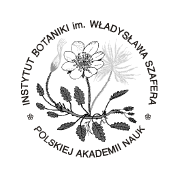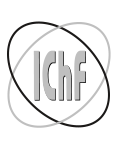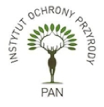- Wyszukaj w całym Repozytorium
- Piśmiennictwo i mapy
- Archeologia
- Baza Młynów
- Nauki przyrodnicze
Wyszukiwanie zaawansowane
Wyszukiwanie zaawansowane
Wyszukiwanie zaawansowane
Wyszukiwanie zaawansowane
Wyszukiwanie zaawansowane

Obiekt
Tytuł: Dichtung and Wahrheit of spatial planning: Legal frameworks versus their application in Central Europe
Inny tytuł:
Wydawca:
Miejsce wydania:
Opis:
29 cm ; Każdy numer posiada własny tytuł.
Abstrakt:
The countries of Central Europe share a common tradition of urban planning and settlement, and their history of governance also shows a number of intersections. Many common features survived after the Great War, nevertheless the division of Central Europe by the Iron Curtain influenced the eastern part of the region dramatically. However, the return of open market to former socialist states was manifested also in legal environment, including the spatial planning system. Governments sought the inspiration in countries that experienced continuous development, but the differences in the legal and cultural environment led to dead ends in many cases . Eventually the main source of inspiration for spatial planning reform logically became the German-speaking countries of Central Europe. Overview in the initial part of the text, aim and method is clarified. Further on, tiers on which spatial planning tools are elaborated, with regards to specifics of unitary and federal states. Following this basic orientation, the legal frameworks in each of the countries in question are described and their specific features, namely their connection to the overall legal environment, are analysed. The conclusion shows certain gap between a first-sight similarity among the national spatial planning arrangement and its practice in spatial management, particularly on the local level of municipalities.
Bibliografia:
BD (2008). Raumordnungsgesetz vom 22. Dezember 2008 (BGBl. I S. 2986), das zuletzt durch Artikel 2 Absatz 15 des Gesetzes vom 20. Juli 2017 (BGBl. I S. 2808) geändert. Bundesrepublik Deutschland.
ČR (2021). Zákon č. 283/2021 Sb. Poslanecká sněmovna Parlementu České republiky. Retrieved from https://mmr.gov.cz/cs/ministerstvo/stavebni-pravo/pravo-a-legislativa/novy-stavebni-zakon
ESPON (2018). COMPASS - Comparative Analysis of Territorial Governance and Spatial Planning Systems in Europe. Final Report. Luxembourg: ESPON EGTC. Retrieved from https://www.espon.eu/planning-systems
Maier, K. (2020). Country profiles: Czech Republic. ČVUT v Praze, Fakulta architektury.
Maier, K., & Řezáč, V. (2019). Spoluúčast privátního sektoru na veřejných výdajích. ČVUT v Praze, Fakulta architektury.
Nowak, M. J., Mitrea, A., Lukstiņa, G., Petrişor, A.-I., Kovács, K. F., Simeonova, V., Yanchev, P., Jürgenson, E., Põdra, K., Řezáč, V., Mikalauskaite, K., Pranevičienė, B., Ladzianska, Z., Baloga, M. (2023). Spatial Planning Systems in Central and Eastern European Countries. Review and Comparison of Selected Issues. Cham: Springer. https://doi.org/10.1007/978-3-031-42722-0
![]()
ÖROK (2018). Spatial Planning in Austria with References to Spatial Development and Regional Policy. Office of the Austrian Conference on Spatial Planning Vienna. https://www.oerok.gv.at//fileadmin/user_upload/Bilder/5.Reiter-Publikationen/_%C3%96ROK_202_en_klein_HP.pdf
Schifferdeckerová, M., & Miklóssyová, L. (2018). Changes brought by the new Building act. KPMG. Retrieved from https://www.danovky.sk/en/changes-brought-by-the-new-building-act
SR (2022). Zákon č. 200/2022 Z.z, o územnom plánovaní. Národná rada Slovenskej republiky.
UmK (2024). Lista planów obowiązujących. Urząd miasta Krakowa. Retrieved from https://www.bip.krakow.pl/?mmi=417
UmstW (2024). Miejscowe plany zagospodarowania przestrzennego. Statystyka planów miejscowych - stan na 29 lutego 2024. Urząd m. st. Warszawy. Retrieved from https://architektura.um.warszawa.pl/informacje-o-planach
ÚUPaV (2023). Úrad pro územné plánovanie a výstavbu SROV. Retrieved from https://stavebnyurad.gov.sk/uzemne-planovanie
ÚÚR (2024). Portál územního plánování. Retrieved from https://portal.uur.cz/obecne-informace-o-uzemi/evidence-uzemne-planovaci-cinnosti.asp
Czasopismo/Seria/cykl:
Tom:
Strona pocz.:
Strona końc.:
Szczegółowy typ zasobu:
Format:
Identyfikator zasobu:
oai:rcin.org.pl:244709 ; 1429-7132 (print) ; 2300-8547 (online) ; 10.7163/Eu21.20242.46.6
Źródło:
CBGiOŚ. IGiPZ PAN, sygn.: Cz.6406, Cz.6407 ; kliknij tutaj, żeby przejść
Język:
Język streszczenia:
Prawa:
Licencja Creative Commons Uznanie autorstwa 4.0
Zasady wykorzystania:
Zasób chroniony prawem autorskim. [CC BY 4.0 Międzynarodowe] Korzystanie dozwolone zgodnie z licencją Creative Commons Uznanie autorstwa 4.0, której pełne postanowienia dostępne są pod adresem: ; -
Digitalizacja:
Instytut Geografii i Przestrzennego Zagospodarowania Polskiej Akademii Nauk
Lokalizacja oryginału:
Dofinansowane ze środków:
Unia Europejska. Europejski Fundusz Rozwoju Regionalnego ; Program Operacyjny Innowacyjna Gospodarka, lata 2010-2014, Priorytet 2. Infrastruktura strefy B + R
Dostęp:
Kolekcje, do których przypisany jest obiekt:
- Repozytorium Cyfrowe Instytutów Naukowych > Kolekcje Partnerów > Instytut Geografii i Przestrzennego Zagospodarowania PAN > Publikacje pracowników i Wydawnictw
- Repozytorium Cyfrowe Instytutów Naukowych > Kolekcje Partnerów > Instytut Geografii i Przestrzennego Zagospodarowania PAN > Biblioteka Instytutu > Serie/Czasopisma/Cykle
- Repozytorium Cyfrowe Instytutów Naukowych > Piśmiennictwo > Czasopisma/Artykuły
Data ostatniej modyfikacji:
2 kwi 2025
Data dodania obiektu:
2 kwi 2025
Liczba pobrań / odtworzeń:
1
Wszystkie dostępne wersje tego obiektu:
https://rcin.org.pl./publication/281422
Wyświetl opis w formacie RDF:
Wyświetl opis w formacie RDFa:
Wyświetl opis w formacie OAI-PMH:
Obiekty Podobne
Maier, Karel Řezáč, Vít

 INSTYTUT ARCHEOLOGII I ETNOLOGII POLSKIEJ AKADEMII NAUK
INSTYTUT ARCHEOLOGII I ETNOLOGII POLSKIEJ AKADEMII NAUK
 INSTYTUT BADAŃ LITERACKICH POLSKIEJ AKADEMII NAUK
INSTYTUT BADAŃ LITERACKICH POLSKIEJ AKADEMII NAUK
 INSTYTUT BADAWCZY LEŚNICTWA
INSTYTUT BADAWCZY LEŚNICTWA
 INSTYTUT BIOLOGII DOŚWIADCZALNEJ IM. MARCELEGO NENCKIEGO POLSKIEJ AKADEMII NAUK
INSTYTUT BIOLOGII DOŚWIADCZALNEJ IM. MARCELEGO NENCKIEGO POLSKIEJ AKADEMII NAUK
 INSTYTUT BIOLOGII SSAKÓW POLSKIEJ AKADEMII NAUK
INSTYTUT BIOLOGII SSAKÓW POLSKIEJ AKADEMII NAUK
 INSTYTUT CHEMII FIZYCZNEJ PAN
INSTYTUT CHEMII FIZYCZNEJ PAN
 INSTYTUT CHEMII ORGANICZNEJ PAN
INSTYTUT CHEMII ORGANICZNEJ PAN
 INSTYTUT FILOZOFII I SOCJOLOGII PAN
INSTYTUT FILOZOFII I SOCJOLOGII PAN
 INSTYTUT GEOGRAFII I PRZESTRZENNEGO ZAGOSPODAROWANIA PAN
INSTYTUT GEOGRAFII I PRZESTRZENNEGO ZAGOSPODAROWANIA PAN
 INSTYTUT HISTORII im. TADEUSZA MANTEUFFLA POLSKIEJ AKADEMII NAUK
INSTYTUT HISTORII im. TADEUSZA MANTEUFFLA POLSKIEJ AKADEMII NAUK
 INSTYTUT JĘZYKA POLSKIEGO POLSKIEJ AKADEMII NAUK
INSTYTUT JĘZYKA POLSKIEGO POLSKIEJ AKADEMII NAUK
 INSTYTUT MATEMATYCZNY PAN
INSTYTUT MATEMATYCZNY PAN
 INSTYTUT MEDYCYNY DOŚWIADCZALNEJ I KLINICZNEJ IM.MIROSŁAWA MOSSAKOWSKIEGO POLSKIEJ AKADEMII NAUK
INSTYTUT MEDYCYNY DOŚWIADCZALNEJ I KLINICZNEJ IM.MIROSŁAWA MOSSAKOWSKIEGO POLSKIEJ AKADEMII NAUK
 INSTYTUT PODSTAWOWYCH PROBLEMÓW TECHNIKI PAN
INSTYTUT PODSTAWOWYCH PROBLEMÓW TECHNIKI PAN
 INSTYTUT SLAWISTYKI PAN
INSTYTUT SLAWISTYKI PAN
 SIEĆ BADAWCZA ŁUKASIEWICZ - INSTYTUT TECHNOLOGII MATERIAŁÓW ELEKTRONICZNYCH
SIEĆ BADAWCZA ŁUKASIEWICZ - INSTYTUT TECHNOLOGII MATERIAŁÓW ELEKTRONICZNYCH
 MUZEUM I INSTYTUT ZOOLOGII POLSKIEJ AKADEMII NAUK
MUZEUM I INSTYTUT ZOOLOGII POLSKIEJ AKADEMII NAUK
 INSTYTUT BADAŃ SYSTEMOWYCH PAN
INSTYTUT BADAŃ SYSTEMOWYCH PAN
 INSTYTUT BOTANIKI IM. WŁADYSŁAWA SZAFERA POLSKIEJ AKADEMII NAUK
INSTYTUT BOTANIKI IM. WŁADYSŁAWA SZAFERA POLSKIEJ AKADEMII NAUK




































